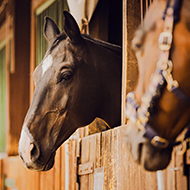Pet parrots may benefit from inter-species video calls, study finds
Parrots were taught how to call each other with the help of their human caretakers.
A new study by researchers at the University of Glasgow and Northeastern University in America, has found that pet parrots may benefit from video-calling other parrots.
For the study, researchers analysed 1000 hours of video observations of 18 pet parrots’ behaviour, collected over three months. The birds were taught how to call each other with help from their human caretakers, who were asked to make a record of their pet’s experience.
The findings showed that the parrots engaged more regularly in social behaviour like preening, playing and singing, and the parrots who made the most calls also received more calls in return. The parrots’ owners also reported improved bonding with their pets.
The research was undertaken to help enrich the lives of pet parrots, who can lack appropriate stimuli to meet their high social, cognitive and emotional needs. In the wild, many species of parrots live in large flocks, so when kept on their own in captivity, birds can develop psychological problems, which can manifest as rocking, excessive pacing, or self-harming behaviours like feather-plucking.
Researchers trained the parrots over a two week period, during which time they were taught to ring a bell when they wanted to make a call. With the help of their owners, the parrots were then able to touch a photo of another bird on the screen of a tablet device to trigger a call to that bird. The parrot receiving the call also needed the help of their owner to answer the call.
Calls were strictly limited to no longer than five minutes, and the owners would finish the call as soon as their bird lost interest. During the two weeks, a total of 212 calls took place.
After the initial training period, a further 147 deliberate calls were made between the parrots assisted by their owners, over a period of two months.
Dr Jennifer Cunha, co-author of the study from Northeastern University, helped to recruit and train the parrot caregivers. She said: “We saw some really encouraging results from the study. The parrots seemed to grasp that they were truly engaging with other birds onscreen and their behaviour often mirrored what we would expect from real-life interactions between these types of birds. We saw birds learn to forage for the first time, and one caregiver reported that their bird flew for the first time after making a call.
“All the participants in the study said they valued the experience, and would want to continue using the system with their parrots in the future.”
The study, has been published by the Association for Computing Machinery.



 Zoetis has launched a new survey to identify management techniques for Equine Herpes Virus (EHV).
Zoetis has launched a new survey to identify management techniques for Equine Herpes Virus (EHV).